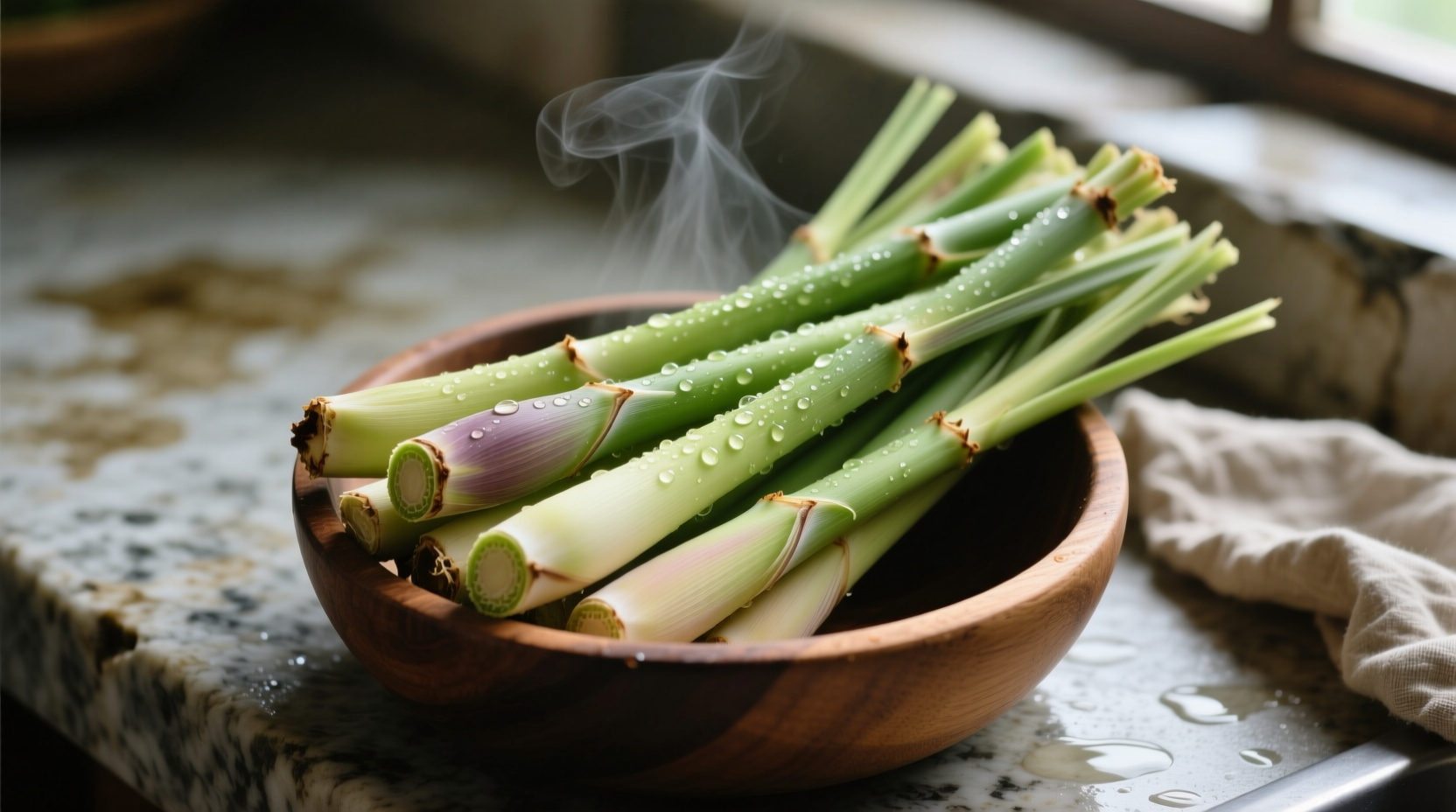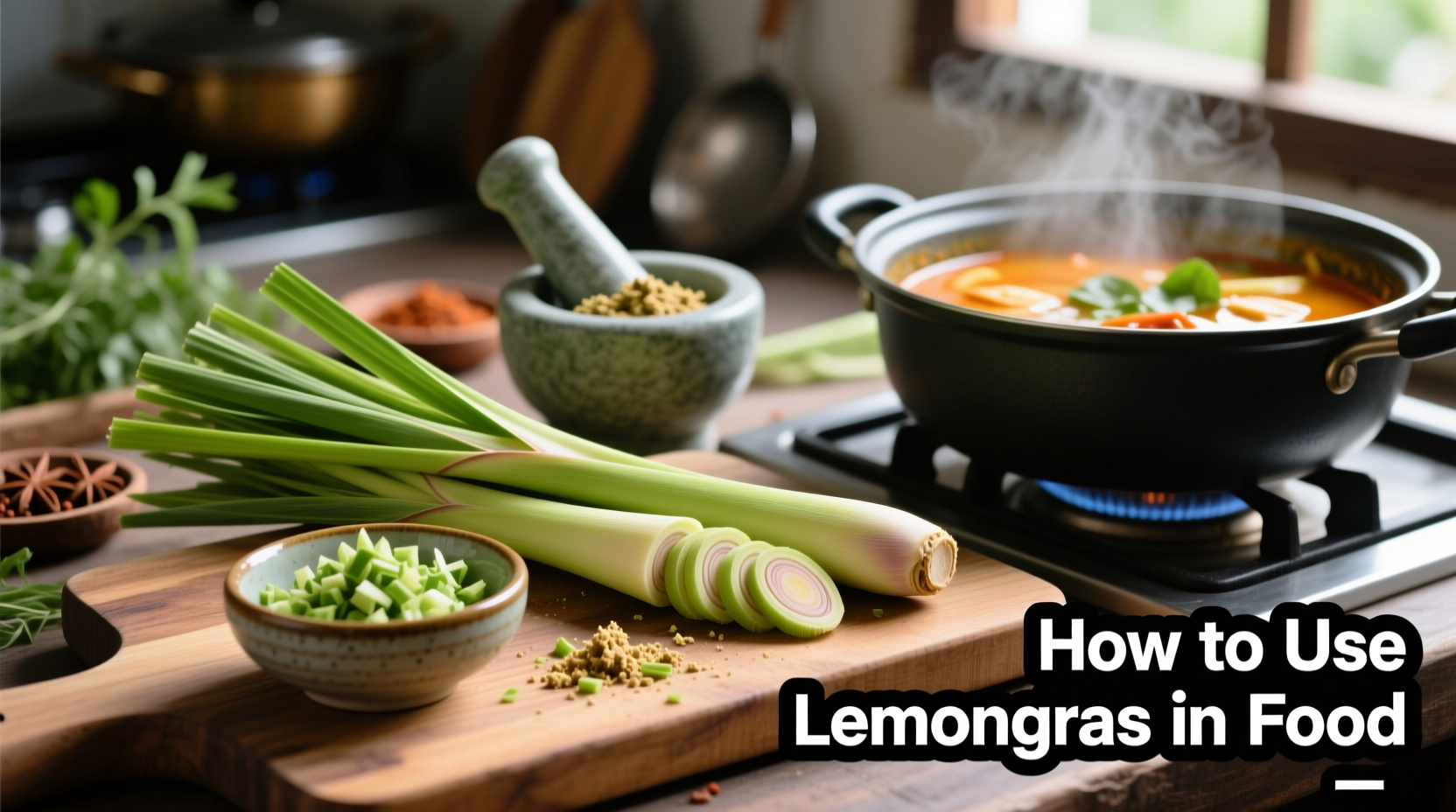Mastering Lemongrass: Your Complete Culinary Guide
When properly prepared and used, lemongrass adds a bright, citrusy complexity that elevates countless dishes. Unlike artificial lemon flavorings, fresh lemongrass delivers nuanced floral notes with subtle ginger-like undertones that can't be replicated. This guide reveals professional techniques for maximizing flavor extraction while avoiding common preparation mistakes that leave your dishes tasting fibrous or bland.
Selecting and Storing Fresh Lemongrass
Choose firm, pale green stalks with tight, bulbous bases - these contain the highest concentration of essential oils. Avoid stalks with dry, brown ends or soft spots. The lower third of the stalk (about 4-6 inches from the base) contains the most flavor. For optimal freshness, store uncut stalks wrapped in a damp paper towel inside an airtight container in your refrigerator's crisper drawer for up to two weeks.
| Preparation Method | Best For | Flavor Release Time | Removal Timing |
|---|---|---|---|
| Whole stalks, bruised | Broths, soups, curries | 20-30 minutes simmering | Before serving |
| Finely minced | Satay marinades, dressings | Immediate | Leave in dish |
| Pounded into paste | Curry bases, stir-fry sauces | 5-10 minutes cooking | Leave in dish |
| Infused in oil | Finishing oils, dipping sauces | 15-20 minutes gentle heat | Strain before use |
Professional Preparation Techniques
Professional chefs use specific preparation methods based on the dish's requirements. For soups and broths, bruising works best: trim the woody base and dry outer layers, then smash the lower section with a knife handle to release essential oils without creating fibrous bits. For marinades and dressings, finely mincing the tender inner core after removing tough outer layers delivers maximum flavor integration. Asian culinary experts often pound lemongrass with other aromatics to create flavor bases that distribute evenly throughout dishes.

Regional Cooking Applications
Lemongrass features prominently in Southeast Asian cuisines, each with distinctive preparation methods:
- Thai cuisine: Used in tom yum soup and green curry paste, where bruised stalks simmer in broths and are removed before serving
- Vietnamese cooking: Finely minced into marinades for grilled meats like chicken or pork
- Indonesian dishes: Pounded with galangal and kaffir lime leaves for rendang curry base
- Caribbean preparations: Steeped in teas and stews for subtle citrus notes
According to agricultural research from the University of Hawaii's College of Tropical Agriculture, lemongrass contains citral, the compound responsible for its distinctive lemon flavor, which is most concentrated in the lower stalk sections (University of Hawaii CTAHR). This explains why professional chefs consistently use the bottom third of the stalk for maximum flavor impact.
Contextual Usage Guidelines
Understanding when and how much lemongrass to use prevents overpowering your dishes. Lemongrass works best in:
- Light broths and seafood dishes (1 stalk per 4 cups liquid)
- Chicken and pork marinades (1-2 tablespoons minced per pound of meat)
- Vegetable stir-fries (2-3 stalks for a family-sized portion)
Avoid using excessive amounts in delicate dishes like custards or light salads where its strong flavor would dominate. Remember that dried lemongrass lacks the vibrant flavor of fresh - use only when fresh isn't available, and reconstitute in warm water before use.
Common Mistakes to Avoid
Many home cooks make these critical errors when using lemongrass:
- Using the entire stalk: Only the lower 4-6 inches contains sufficient flavor; the upper portions are too fibrous
- Adding too late: Lemongrass needs 15-20 minutes simmering to properly infuse dishes
- Not removing whole stalks: Fibrous pieces can cause choking hazards if left in finished dishes
- Over-mincing: Too-fine pieces become unpleasantly chewy when cooked
Substitution Options
When fresh lemongrass isn't available, consider these alternatives:
- Lemongrass paste: Use 1 teaspoon paste per stalk of fresh
- Dried lemongrass: Steep 1 teaspoon in hot liquid for 15 minutes, then strain
- Lemon zest + ginger: 1 teaspoon zest plus 1/4 teaspoon grated ginger per stalk
- Citrus-infused oil: Provides similar aromatic quality in finishing applications
Preserving Lemongrass Flavor
Freeze whole stalks in airtight bags for up to 6 months - they'll retain flavor better than refrigeration alone. For immediate use, chop excess stalks and freeze in ice cube trays with water or oil for convenient portioning. According to culinary research from the Culinary Institute of America, freezing actually breaks down some fibrous tissues, making flavor extraction easier when thawed (CIA Flavor Science Department).











 浙公网安备
33010002000092号
浙公网安备
33010002000092号 浙B2-20120091-4
浙B2-20120091-4